
Learn from Dr Tee through free stock investment courses on 10 strategies of stock trading & investing.
Dr Tee (Ein55) FREE Stock Investment Course in Singapore

Learn from Dr Tee through free stock investment courses on 10 strategies of stock trading & investing.

Crisis stock investing is investing in cyclic giant stocks, ideal for Buy Low Sell High investing strategy. Usually crisis may happen at business (Level 1, company losing money), sector (Level 2, bearish sector), country (Level 3, recession) or global (Level 4, financial crisis), creating different degrees of fear in the stock market, resulting in fall of share prices. Subsequently, when the market fear turns into greed, these crisis stocks may become uptrend momentum stocks, ideal for selling high.
There are 4 different qualities of crisis stocks with long term low optimism. An investor has to carefully identify the nature of crisis stock investing, understanding how the falling in share prices are induced.
1) Low Quality Low Optimism (L1 Crisis Stock Investing)
Long term optimism of stock is low, driven by decline in L1 business but L2-L4 are fine. Noble Group could be an example. Without consideration of sustainable business, pure strategy of Buy Low may result in Get Lower in share prices, which is a common pitfall for Technical Analysis. Both Fundamental Analysis (FA) and Technical Analysis (TA) should be integrated with Optimism Strategies with consideration of Personal Analysis (PA)
2) Average Quality Low Optimism (L2 Crisis Stock Investing)
Long term optimism of stock is low, driven by decline in L1 business & L2 (sector), while L3-L4 are fine. Examples include oil & gas crisis stocks in the last 1 year, casino crisis stocks 2 years ago, etc. It happens during the sector rotation which the sector market cycle may not align with the country/global economy cycle. If the sector is not a sunset industry, usually it would recover again as there is unique demand vs supply within each sector for investment.
3) High Quality Low Optimism (L3/L4 Crisis Stock Investing)
Long term optimism of stock is low, driven by decline in L1-L4 (business/sector/country/global financial crisis). More than 50% global cyclic giant stocks during global financial crisis would be affected in both business (drop in earning or even losing money) and share prices (L1-L4 from individual stock to global stock indices). Since the market fear at L3/L4 may not last long (global political leaders would take actions by then to save the whole world), the downside of global stock market is limited but an investor needs to have sufficient holding power through the cold winter time of global financial crisis. For example, many cyclic giant bank stocks may behave this way.
4) Excellent Quality Low Optimism (L4 Crisis Stock Investing with strong L1 Business)
Long term optimism of stock is low, driven by decline in L2-L4 (sector/country/global financial crisis) but L1 business is fine. Less than 10% global growth giant stocks during global financial crisis could still be profitable or even growing in business while the share prices falling relatively less (defensive in nature) than the average in global stock market. In fact, defensive growth giant stocks are suitable for Buy Low & Hold for long term investing, sell is an optional strategy.
The safest time to buy a giant stock is when everyone is afraid the sky will fall down while the business is still operating normally with consistent performance. This could be a rare opportunity to buy during a crisis but many people are too normal, do not know how to take this advantage to truly buy low sell high.
A smart investor may not need to consider only crisis stock investing. There are other strategies such as growth stocks, dividend stocks, undervalue stocks and momentum stocks, etc, may be integrated to form a balance stock investment portfolio.
Learn from Dr Tee through high-quality free stock investment courses.
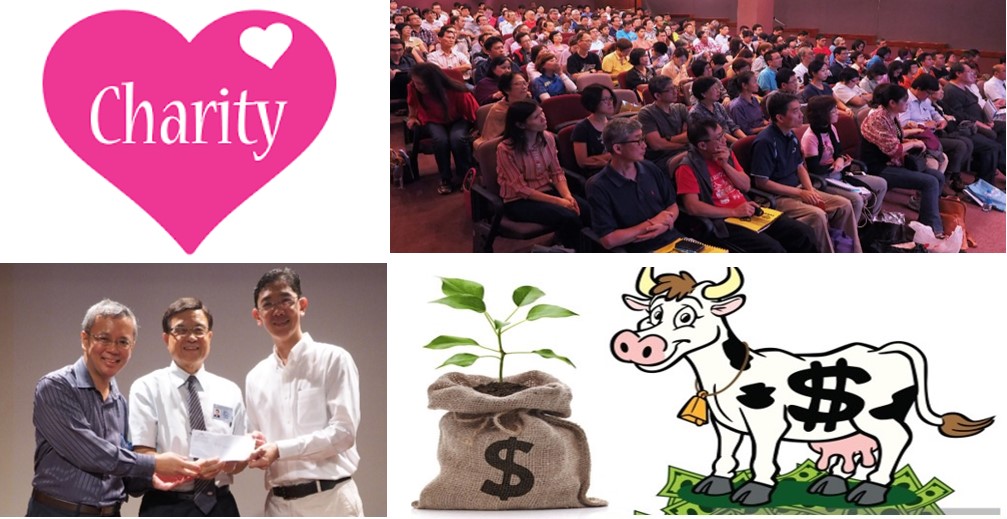
Dr Tee, Ein55 Mentor & Graduates have together organised 6 charity investment courses (REITs/Business Trusts in Nov 2015 and May 2017, High Dividend Stocks in Mar 2016 and Oct 2017, Discounted NAV Stocks in Sep 2016, and Capital Growth Stocks in Apr 2018) in the past 3 years, donating net income of around $110,000 to Tzu Chi 慈济 (Singapore). We hope to inspire more Ein55 Graduates to reach out the society, helping others who are in need. More importantly, they have also learned the secrets of making money through investment. When more Ein55 Graduates are successful financially, they could also contribute back to the society to help more people in future.
Here are key learning points from the recent Charity Course on Capital Growth Stocks:
1) Two approaches in investing for Capital Growth
– Asset Base approach – buy base on margin of safety via calculate it’s “Discounted” NAV of all present assets
– Earning-Cash flow approach – buy base on margin of safety via calculate it’s Intrinsic value using “Discounted Cash Flow” of future cash flow.
2) Discounted Cash Flow (DCF) model is the most common method to calculate Intrinsic value of a growing company, using future cash flow projections and discounts them using an expected annual rate to arrive to present value.
3) An economic moat is a structural business characteristic that allows a company to generate excess economic returns for an extended period. It protects a company’s profit from being attacked by business forces. Traditional management theory terms as “Sustainable or Durable Competitive Advantages” or simplify terms as “Entry Barriers”.
4) A company with economic moats able to generate higher level of Economic Profit compare to its peers and can sustain competitive advantage for a long period of time. Economic moats drive value creation that leads to revenue growth, high profitability and high return on invested capital. The free cash flow accumulated create economic profit, this is the real value creation company.
5) Here are 3 Steps in Stock Investing:-
– Identify businesses that can generate above-average profits for many years
– Wait until the shares price trade below their intrinsic value, and then buy
– Hold those shares until either the business deteriorates, or the shares become overvalued, or a better investment is found.
We should drive the money (helping others when you are successful), not driven by the money (making money only for own gain). Investors should learn the unique Optimism Strategies with FA (Fundamental Analysis) + TA (Technical Analysis) + PA (Personal Analysis) developed by Dr Tee to choose strong global stocks, buying them at low price, then holding for consistent dividend payout or selling for high capital gains. High-quality free stock investment courses are provided by Dr Tee to the public.


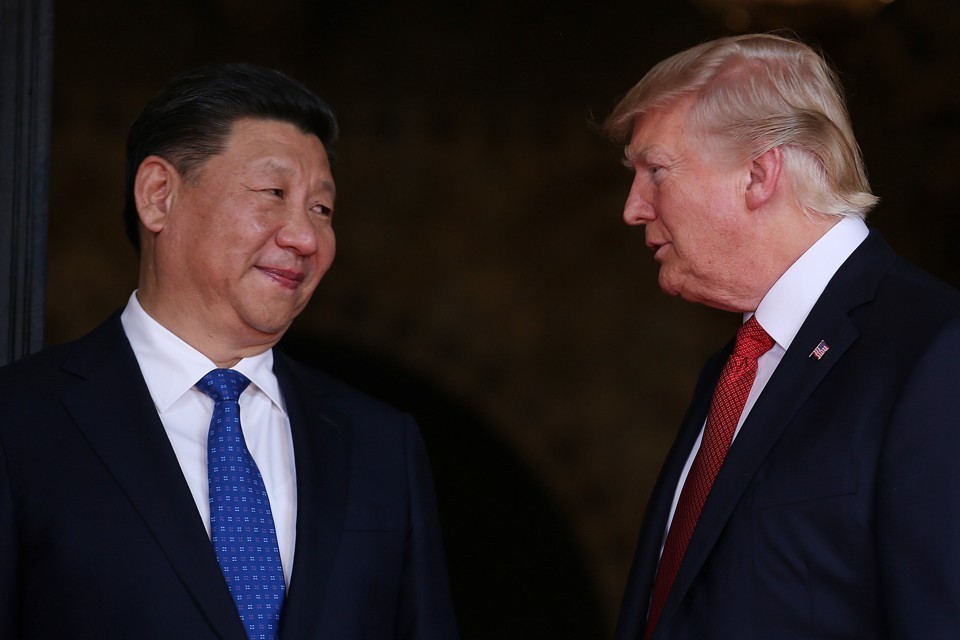

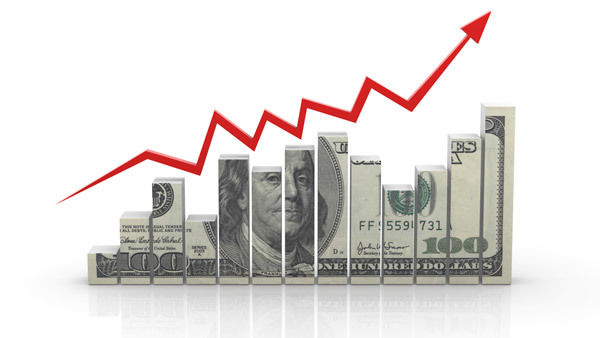

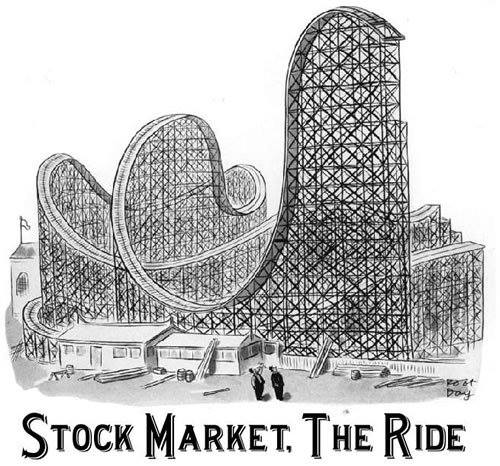 Share price is a 3-dimensional movement, governed by Ein55 Law of Stock Market Motion:
Share price is a 3-dimensional movement, governed by Ein55 Law of Stock Market Motion:
Optimism = PA = TA – FA, [gap between price and value]
TA = FA + PA
z = f (FA, PA), function of FA and PA
where PA = Personal Analysis, TA = Technical Analysis, FA = Fundamental Analysis
It means share price (TA) which is the vertical Z-axis, is a function of X-axis which is business Fundamental Analysis (FA: strong or weak) and Y-axis (depth direction of roller coaster) which is market emotions with Personal Analysis (PA: greed or fear). Both the FA and PA could contribute to up and down in share prices (TA), main contributors to the Law of Stock Market Motion.
Ein55 Law of Stock Market Motion simply means that both market emotions and macroeconomy / business strength contribute to movement in stock market. Based on probability, a company which has consistent good performance in business will likely to perform well in stock prices over a longer term. Similarly, when there is an unexpected bad news or unpredictable outcome which results in stock market fear, the share price is likely to fall down. In the real world of stock market, both fundamental (FA) and emotions (PA) will be combined to form an unique condition of stock market on different day, therefore creating different share prices each day, hour or even minute.
When we buy a stock at low optimism, it means we buy when the gap between share price and value is the large, an undervalue stock with price below value. When we sell a stock at high optimism, it means the share price is much more than value, an overpriced stock.
Learn the Law of Stock Market Motion from Dr Tee FREE stock investment course to understand how the share prices could move up and down in the stock market.
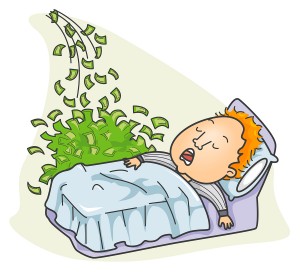

===============================
eBook #1 (Global Stock Market Outlook)
===============================
1. Mass Market Sentiment Survey
2. Review of Global Stock Markets
3. US Market Outlook (Stock / Property...)
4. China / HK / Europe Market Outlook
5. Singapore Stock & Property Outlook
6. Conclusions and Recommendations
===============================
eBook #2 (Top 10 Stocks: Dream Team Portfolio)
===============================
1. Personalized Stock Investment Portfolio
2. Ein55 Global Top 10 Stocks
3. Summary of Actions
Copyright © 2025 · Focus Child Theme on Genesis Framework · WordPress · Log in